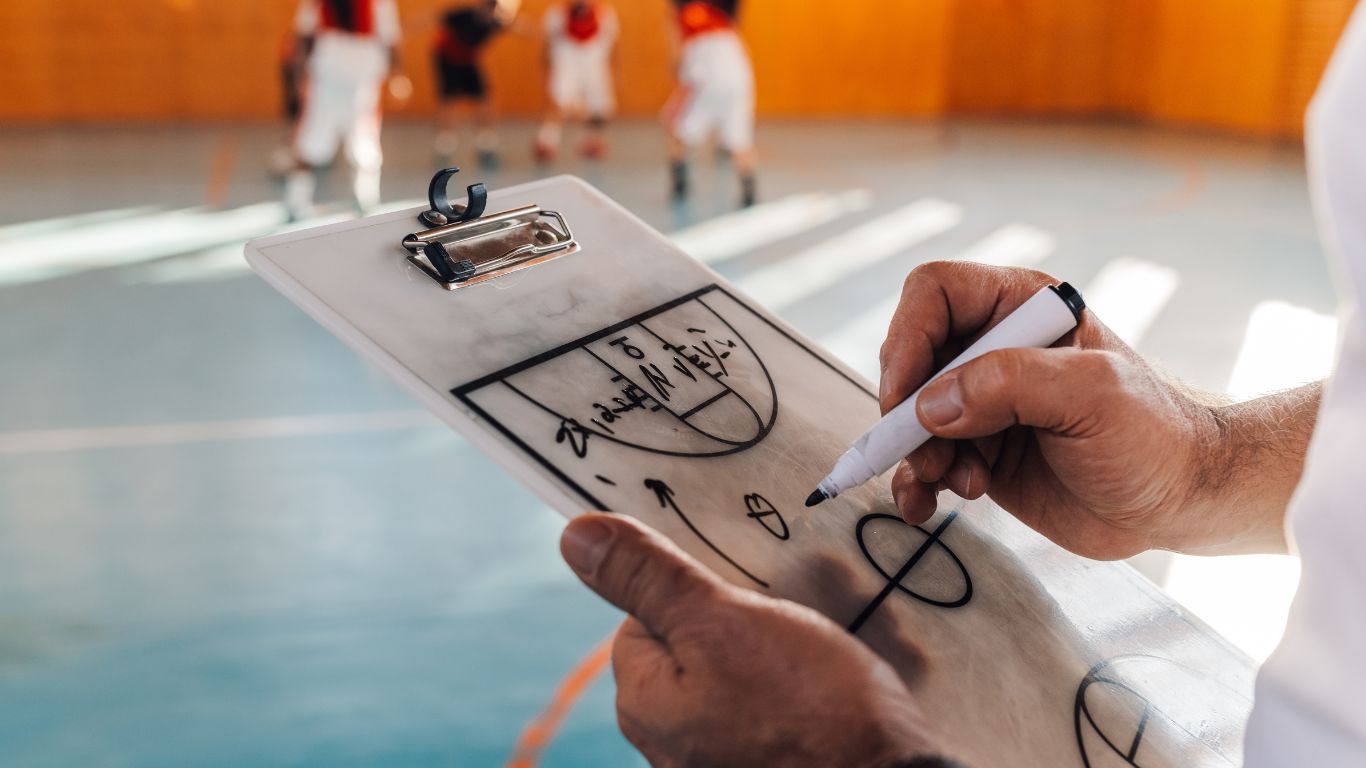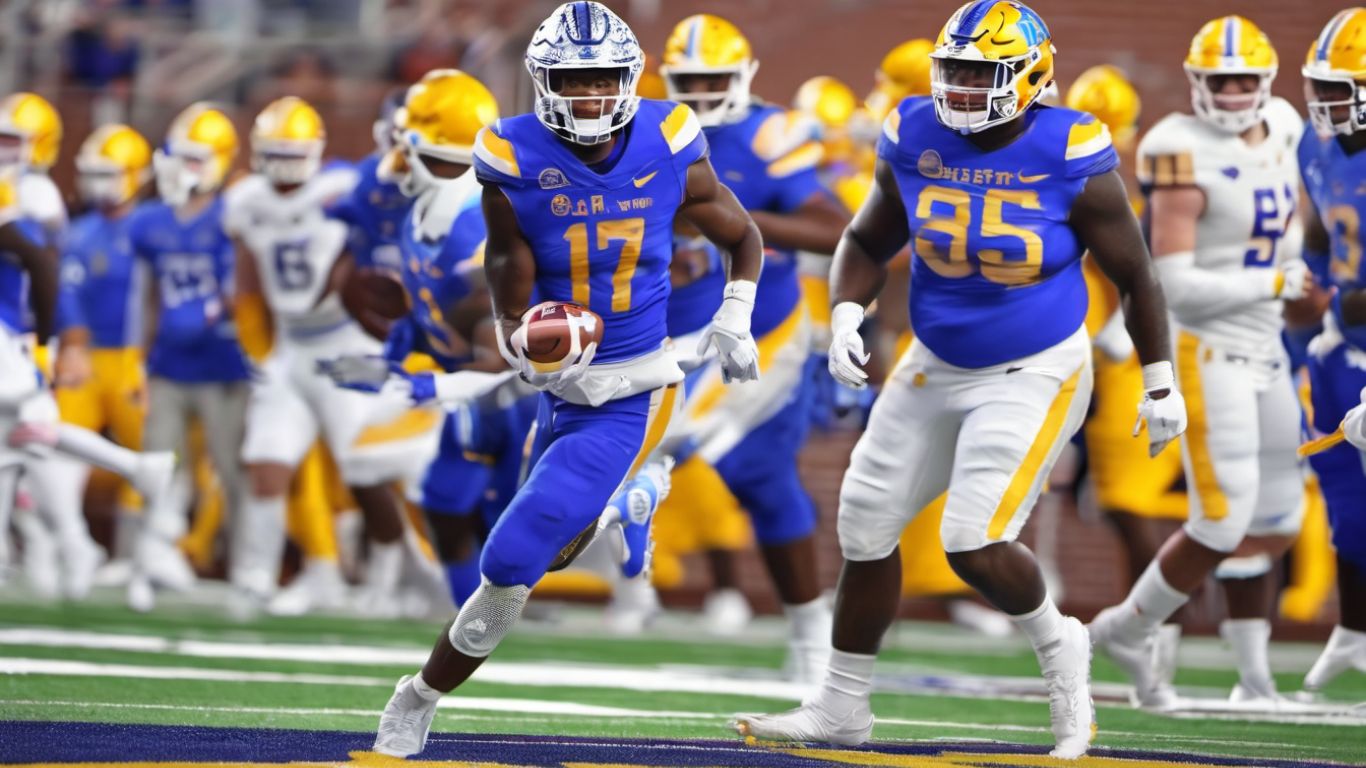To play football, gather a team, learn the rules, and practice ball handling and passing. Football is a popular team sport played by millions of people around the world.
The game requires two teams, each with 11 players, to score points by getting the football into the opposing team’s goal. It involves a combination of physical strength, agility, and strategic thinking. Whether you are a beginner or an experienced player, understanding the fundamentals of football, such as the rules, techniques, and teamwork, is essential for enjoying and excelling in the game.
This guide will provide a comprehensive overview of how to play football and offer valuable insights into becoming a proficient football player.

Credit: thetitansfa.com
Football Basics
Football, often known as soccer, is a widely loved and massively popular sport across the globe. Understanding the basics of football is crucial for enjoying the game to the fullest. Whether you’re a player, a fan, or simply curious about the sport, having a grasp of the Rules and Objectives, Positions and Roles, as well as the Equipment and Field is essential. Let’s delve into the fundamental components of this captivating game.
Rules And Objectives
Football is played between two teams, each aiming to score goals by getting the ball into the opposing team’s net. Players are not allowed to use their hands or arms, except for the goalkeeper. The game comprises two halves, with the team scoring the most goals declared the winner. Fair play, sportsmanship, and adhering to the referee’s decisions are integral to the game.
Positions And Roles
Football features various positions, each with distinct roles and responsibilities. Positions include goalkeeper, defenders, midfielders, and forwards. Goalkeepers aim to prevent the opposing team from scoring. Defenders protect their team’s goal, while midfielders bridge the gap between defense and offense. Forwards focus on scoring goals.
Equipment And Field
Players typically wear a jersey, shorts, stockings, and cleats, with the goalkeeper donning gloves. The game is played on a rectangular field with goals at each end. The field is divided into sections, and the center spot is where the game begins. The ball used in football is spherical and must be made of suitable material.
Mastering Techniques
Football is a game of skill and strategy, and mastering certain techniques is essential for success on the field. Whether you’re a beginner looking to hone your skills or an experienced player striving for improvement, understanding the fundamentals of passing, receiving, dribbling, ball control, shooting, and scoring is crucial. In this guide, we’ll break down the key components of mastering these techniques to help you elevate your game to the next level.
Passing And Receiving
Good passing and receiving are essential skills for any football player. When passing, the key is accuracy and weight of the pass. By keeping your head up and body positioning correct, you can effectively distribute the ball to your teammates. When receiving, focus on first touch and control to maintain possession and set up the next play.
Dribbling And Ball Control
Dribbling is about maintaining close control of the ball while moving past opponents. Practice using both feet and quick changes of direction to keep defenders off balance. Ball control involves using various parts of your foot to manipulate the ball and maintain possession in tight spaces.
Shooting And Scoring
The ability to shoot and score is a critical aspect of football. Focus on foot placement and body balance when striking the ball. Understanding angles and finishing techniques will help you become a proficient goal scorer.
Tactical Strategies
When it comes to the game of football, players need more than just raw skill and athleticism. They also need strategic thinking and a solid understanding of tactical strategies to outsmart their opponents. In this article, we will explore three key tactical strategies that can help players take their game to the next level: creating plays and formations, defensive techniques, and set pieces.
Creating Plays And Formations
One of the most important aspects of football is creating effective plays and formations. The right combination of players, positions, and movement can make all the difference in a game. Coaches and players spend countless hours studying their opponents, analyzing their strengths and weaknesses, and devising strategies to exploit them. By creating plays and formations, teams can maximize their chances of success on the field.
Creating plays involves designing specific movements and patterns that players execute during a match. It requires careful coordination, communication, and execution to ensure that everyone is on the same page. Coaches often use visual aids like whiteboards or videos to explain the plays to their team. These plays can range from simple, such as a give-and-go between two players, to complex, involving multiple players and intricate passing sequences.
Formations, on the other hand, refer to the arrangement of players on the field. Different formations suit different styles of play and can dictate the team’s overall strategy. Common formations include the 4-4-2, 4-3-3, and 3-5-2. Each formation has its own strengths and weaknesses, and it is up to the coach to select the one that best suits the team’s playing style and the opponent’s tactics.
Defensive Techniques
In football, a strong defense is just as important as a potent offense. Defensive techniques play a crucial role in preventing the opposing team from scoring and winning the game. It requires discipline, communication, and anticipation to effectively defend against the opponent’s attacks. Let’s explore some of the key defensive techniques:
- Marking: Players must closely mark their opponents to prevent them from receiving the ball or making dangerous runs.
- Tackling: Tackling is a defensive move used to dispossess the opponent of the ball. It requires timing, technique, and physicality.
- Pressing: Pressing is a defensive tactic where players apply pressure on the opposing team’s players to force mistakes and regain possession of the ball.
- Covering: Players must work together to cover their teammates and fill the gaps to ensure there are no spaces for the opposition to exploit.
- Intercepting: Intercepting passes is a skill that can disrupt the opposing team’s attack and quickly transition the game to offense.
Set Pieces
In addition to general tactics on the field, set pieces can also provide a strategic advantage to a team. Set pieces include corner kicks, free kicks, and throw-ins where players can position themselves strategically to maximize scoring opportunities. These situations allow teams to work on specific plays and exploit the weaknesses of the opponent’s defense.
During set pieces, players should adhere to their assigned roles and move with precision to execute the play effectively. The goal is to create confusion and openings in the opponent’s defense, giving the attacking team a better chance to score. Set pieces require careful planning and extensive practice to ensure that players are well-coordinated and ready to capitalize on any opportunities that arise.

Credit: www.skysports.com
Physical Training
Looking to learn how to play football? Dive into physical training, which includes exercises like running, agility drills, and strength training to enhance your skills on the field. Practice makes perfect!
Endurance And Stamina
One of the most important aspects of physical training in football is developing endurance and stamina. In order to keep up with the fast-paced nature of the game, players need to have the ability to sustain their performance over an extended period of time. Building endurance and stamina not only allows players to maintain a high level of intensity throughout the game but also helps prevent fatigue and injuries.
Endurance training involves activities that focus on increasing the cardiovascular fitness of the players. These activities can include long-distance running, cycling, swimming, or even playing other sports such as basketball or tennis that require continuous movement. By engaging in regular endurance workouts, players can improve their lung capacity, enhance the efficiency of their cardiovascular system, and increase their overall stamina on the field.
Speed And Agility
In addition to endurance and stamina, speed and agility are crucial for success in football. Being able to quickly accelerate, change direction, and react to different situations on the field can give players a significant advantage over their opponents.
Speed training involves exercises that focus on improving a player’s running speed, including sprints and interval training. Agility training, on the other hand, utilizes drills that aim to enhance a player’s ability to change direction rapidly and maintain control while doing so. These drills often involve ladder drills, cone drills, and shuttle runs, all of which require precise footwork and quick reflexes.
Strength And Power
While endurance, stamina, speed, and agility may be the more flashy aspects of physical training in football, strength and power cannot be overlooked. Developing the strength and power of the muscles is crucial for various aspects of the game, such as winning physical battles, jumping for headers, and delivering powerful shots.
Strength training focuses on exercises that target the major muscle groups, including the chest, shoulders, back, legs, and core. This can involve weightlifting exercises such as squats, deadlifts, bench press, and lunges, as well as bodyweight exercises like push-ups and pull-ups. Power training, on the other hand, involves explosive movements such as jump squats, medicine ball throws, and plyometric exercises, which help improve a player’s ability to generate force quickly.
Physical training plays a crucial role in football, helping players develop the endurance, stamina, speed, agility, strength, and power required to excel on the field. By focusing on these aspects of physical fitness, players can enhance their overall performance, decrease the risk of injuries, and contribute to the success of their team.
Mental Preparation
Playing football requires more than just physical skills; it also demands mental preparation. The right mindset can make a significant difference in your performance on the field. Whether you’re a beginner or a seasoned player, mastering the mental aspect of the game is essential for success. In this section, we will discuss the key elements of mental preparation for football players.
Focus And Concentration
Focusing and maintaining concentration are crucial skills for any football player. The ability to block out distractions and stay mentally present during practice and games can elevate your performance. Here are a few tips to improve your focus and concentration:
- Set clear goals: Define specific goals for each practice session or game to stay focused on what you want to achieve.
- Visualize success: Use visualization techniques to imagine yourself performing well and achieving your goals. This can help increase your focus and build confidence.
- Avoid negative thoughts: Replace negative thoughts with positive affirmations. Positive thinking can keep your mind focused and prevent self-doubt from affecting your performance.
- Practice mindfulness: Incorporate mindfulness exercises into your routine to enhance your ability to stay present and focused. Breathing exercises and meditation can help calm your mind and sharpen your concentration.
Teamwork And Communication
Football is a team sport that requires effective teamwork and communication. Great teams are built upon trust, coordination, and clear communication on and off the field. Here’s how you can improve your teamwork and communication skills:
- Develop trust: Build trust with your teammates by being reliable, supportive, and accountable. Trusting your teammates will enhance your communication and cooperation.
- Communicate actively: Effective communication is key to successful teamwork. Verbally express your intentions, give clear instructions, and provide constructive feedback to ensure everyone is on the same page.
- Understand roles and responsibilities: Know your position’s roles and responsibilities, as well as those of your teammates, to facilitate better coordination and teamwork.
- Practice active listening: Listen attentively to your teammates’ instructions and feedback, as this promotes understanding and ensures effective communication.
Game Analysis
Game analysis involves studying and understanding the strategies and tactics of your opponents, as well as your own team’s performance. Analyzing and learning from past games can help you make better decisions on the field. Here are some ways to improve your game analysis:
- Study game footage: Watch recorded games or highlights to analyze the strategies employed by your opponents and identify areas for improvement in your own gameplay.
- Discuss with teammates: Engage in post-game discussions with your teammates and coaches to share observations and insights. Collaborative analysis can lead to a deeper understanding of the game.
- Develop a game plan: Use the insights gained from game analysis to develop a strategic game plan for upcoming matches. This will enable you and your teammates to play more effectively.
- Continuously adapt: As you progress in your football journey, refine your game analysis techniques. Adapt to changes in the game and stay up-to-date with the latest tactics and trends.

Credit: www.covers.com
Frequently Asked Questions
How Do You Play Football?
Football is played with two teams of 11 players each. The objective is to score goals by getting the ball into the opponent’s net. Players use their feet, heads, or any body part except their hands to move the ball.
The team that scores the most goals within the specified time wins the game.
What Are The Basic Rules Of Football?
The basic rules of football include offside, fouls, penalties, throw-ins, goal kicks, and corner kicks. Offside is called when an attacking player is closer to the opponent’s goal than the last defender when the ball is passed. Fouls can result in free kicks or penalties, and throw-ins, goal kicks, and corner kicks are used to restart play.
What Equipment Do You Need To Play Football?
To play football, you need a football (soccer ball), goal posts, a pitch (field), and appropriate footwear like cleats. It is also recommended to wear shin guards to protect your legs from impacts and injuries. A properly fitted jersey and shorts, along with socks, complete the basic equipment needed for playing football.
Conclusion
To sum it up, learning how to play football can be a rewarding experience for individuals of all ages and skill levels. By following the basic steps outlined in this post, you can develop your techniques, improve your physical fitness, and enjoy the camaraderie that comes with being part of a team.
So, lace up your boots, hit the field, and embrace the joy of the beautiful game!







